Reprinted with permission from The Christian Science Monitor
Justice – the world’s search for it made it one dictionary's word of the year for 2018. Native American tribes are increasingly taking that search down paths both new and traditional, offering a richer portrait of how justice can be found.
MARCH 27, 2019 - KLAMATH, CALIF. - The mouth of the Klamath River – the spiritual heart of Yurok country – can be hard to find.
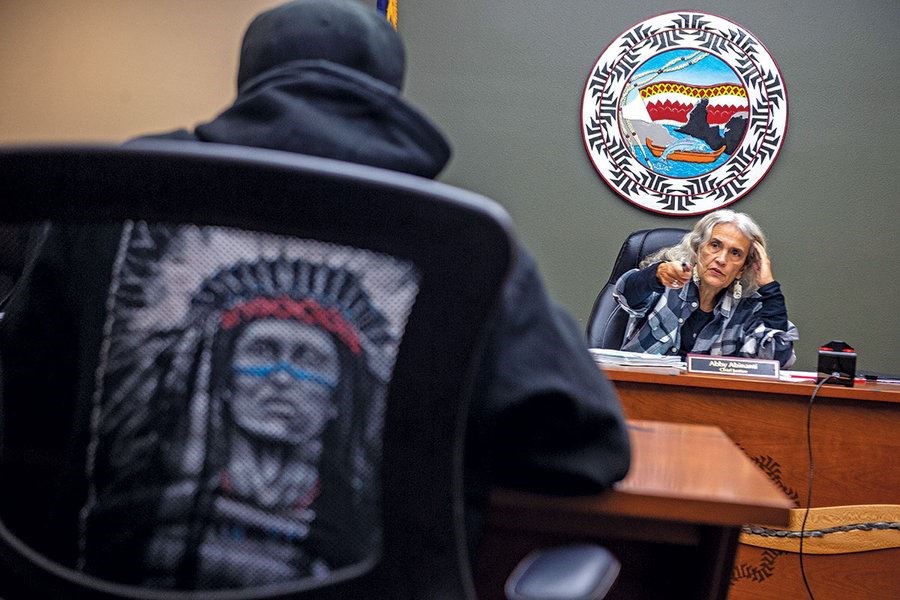 Judge Abby Abinanti presides over child support court at the Yurok Tribal Court in Klamath, California. It is the first tribally controlled child support court in the state.Ann Hermes/StaffSurrounded by mountains, cloaked in coastal redwoods, and emptying into the Pacific Ocean, the river is often obscured in fog. Only the salmon and the Roosevelt elk seem to have no trouble finding the Klamath.
Judge Abby Abinanti presides over child support court at the Yurok Tribal Court in Klamath, California. It is the first tribally controlled child support court in the state.Ann Hermes/StaffSurrounded by mountains, cloaked in coastal redwoods, and emptying into the Pacific Ocean, the river is often obscured in fog. Only the salmon and the Roosevelt elk seem to have no trouble finding the Klamath.
Winter is the rainy season, but this morning is different. An early February storm has fought through the salty air and blanketed the famous towering conifers and steep, winding roads with a beautiful but treacherous layer of snow and ice.
Ira Thompson is here for his court date anyway, having made the 30-minute drive south from Crescent City. He grew up here, and when he got in serious trouble for the first time – a third DUI and a possible four months in jail – he knew he needed to come home. His court-appointed lawyer, he says, “wasn’t doing much.” Jail would mean missing Christmas and birthday parties with his two daughters, and probably losing his job. So he reached out to the Yurok Tribal Court. He reached out to Abby Abinanti.
The tribal court is not your average court. Everyone, including Judge Abinanti, sits at eye level. When pushed together, the court tables complete a carving of the Klamath River.
As Mr. Thompson enters, the air tastes of musky angelica root (burned by a paralegal minutes earlier to cleanse the room of pain, anxiety, and other negative energy).
Judge Abby, as everyone calls her, is not your average judge. She sits at a table across from Mr. Thompson wearing her typical court attire: gray jeans and a crimson turtleneck. Her obsidian nail polish matches her black cardigan and cowboy boots. A necklace of dentalium shells, as white as her long hair, hangs around her neck.
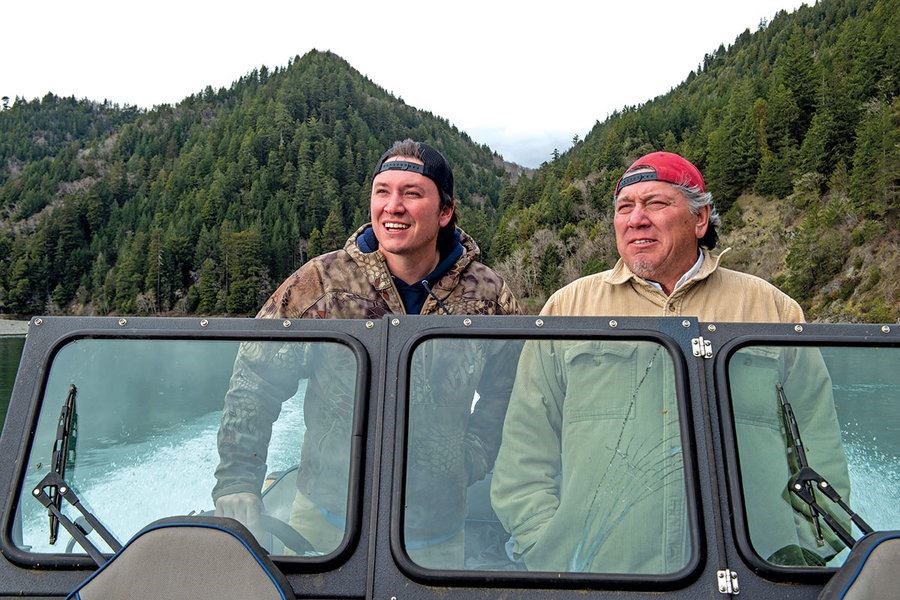 Yurok Tribal Court Associate Judge Bill Bowers (r.) fishes with his son, Will, on California’s Klamath River.Ann Hermes/Staff“How are things going?” she asks him.
Yurok Tribal Court Associate Judge Bill Bowers (r.) fishes with his son, Will, on California’s Klamath River.Ann Hermes/Staff“How are things going?” she asks him.
“Staying home,” he replies.
Mr. Thompson is under house arrest and participating in the court’s wellness program, a treatment employing Yurok cultural immersion. That’s the deal the tribal court struck with the county instead of jail time. He’s been home carving earrings out of redwood, making elk horn purses, and selling them. “That sounds good,” she says, bringing the hearing briskly to an end about five minutes after it started. “Just don’t sell them all before I can buy one.”
When Judge Abinanti joined the Yurok Tribal Court in 2007 it operated like a normal state court, albeit on a much smaller scale. When most Yuroks got into trouble with the law they went to local state courts, and they entered a system designed to be adversarial and punitive. Root causes often went ignored and unaddressed, and recidivism inevitably followed.
Judge Abinanti has taken the court in a different direction: one more communal and rehabilitative. It’s a judicial path followed by other tribes around the country. Personal responsibility and renewal – two pillars of the once nearly extinct Yurok culture – now permeate the court’s functions.
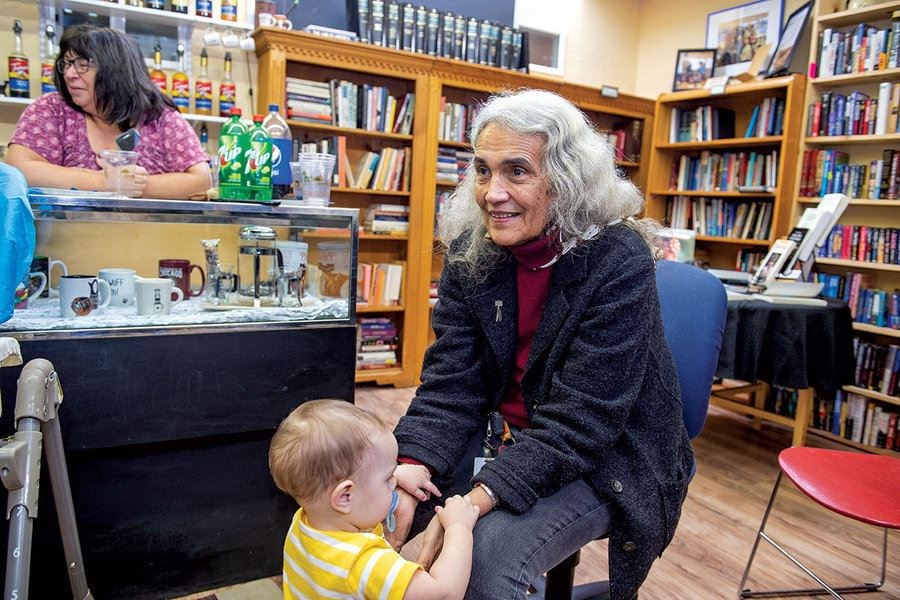 Judge Abinanti, chief judge of the Yurok Tribal Court, plays with Lincoln at his birthday party in the Klamath River Book Nook, which she helped bring to the community in Klamath, California.Ann Hermes/StaffIncarceration has largely been replaced by supervised release combined with Yurok traditions such as dancing and wood carving. Lawyering up for family disputes and child custody battles has been replaced by mediation. Almost every case is resolved through mediation – victims and perpetrators talking with each other – even if it takes years. Tribal courts resemble the growing U.S. restorative justice movement, which emphasizes repairing the harm caused by criminal behavior and getting all stakeholders involved. Judge Abinanti says it just resembles the old Yurok values system.
Judge Abinanti, chief judge of the Yurok Tribal Court, plays with Lincoln at his birthday party in the Klamath River Book Nook, which she helped bring to the community in Klamath, California.Ann Hermes/StaffIncarceration has largely been replaced by supervised release combined with Yurok traditions such as dancing and wood carving. Lawyering up for family disputes and child custody battles has been replaced by mediation. Almost every case is resolved through mediation – victims and perpetrators talking with each other – even if it takes years. Tribal courts resemble the growing U.S. restorative justice movement, which emphasizes repairing the harm caused by criminal behavior and getting all stakeholders involved. Judge Abinanti says it just resembles the old Yurok values system.
The Yurok were village people, she likes to say. Living in clusters of redwood cabins along the Klamath River, people in the communities were so interdependent that when villagers did something wrong, they couldn’t just be locked away. They had to face consequences, but also become responsible, productive community members again. That’s tribal justice.
After what she calls “the invasion” by European settlers, the Yurok way of life was lost. By helping revive those values and applying them to modern-day problems – addiction, domestic violence, foster care – the Yurok say she’s not only meting out justice, she’s helping revive the tribe itself. And some U.S. criminal justice reformers are now beginning to explore what lessons can be learned from tribal courts.
“We’re not going to go back 200 years, but we have a values system and we’re going to develop our practices for today from that values system,” Judge Abinanti says. “I think people need to make a decision about what kind of system they want,” she adds. “My preference is community-based justice.... My belief is people thrive in community, and they don’t if they’re not.”
The Klamath River has always been at the center of Yurok life, and the tribe – the largest in California with about 5,000 members – is one of the few that still occupies its ancestral land. Yurok have fished salmon from the river for centuries, and the river mouth, in the shadow of the sacred rock ‘O Re-gos, is where tribes have gathered for ceremonial dances to renew and balance the world. The Yurok reservation is small – it hugs the Klamath, extending 44 miles inland and one mile on each side – and most Yurok live outside it.
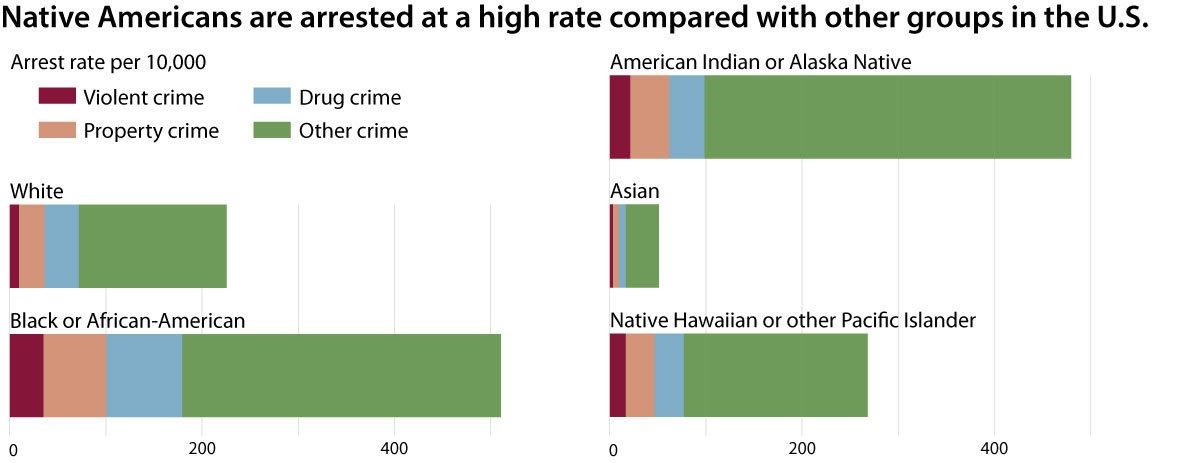 SOURCE: FBI, U.S. CensusJacob Turcotte/StaffAny Yurok tribe member is eligible to have their case heard in the tribal court (except for felony cases, which go to state or federal court). Judge Abinanti has expanded the kinds of cases the tribal court hears, from fishing disputes to family law and drugs, and has formed joint tribal specialty courts in neighboring counties for cases involving Yuroks. As with Mr. Thompson, convicted for DUI, she also negotiates with other judges for alternative sentences for Yuroks convicted in other jurisdictions.
SOURCE: FBI, U.S. CensusJacob Turcotte/StaffAny Yurok tribe member is eligible to have their case heard in the tribal court (except for felony cases, which go to state or federal court). Judge Abinanti has expanded the kinds of cases the tribal court hears, from fishing disputes to family law and drugs, and has formed joint tribal specialty courts in neighboring counties for cases involving Yuroks. As with Mr. Thompson, convicted for DUI, she also negotiates with other judges for alternative sentences for Yuroks convicted in other jurisdictions.
For example, in lieu of a cash fine for a minor violation of a salmon fishing regulation, Judge Abinanti might ask the Yurok violator to donate fish to the next tribal dance.
“What we’ve been trying to do, and what Judge Abby has done such a remarkable job at, is tailor [judicial systems] to the specific tribe,” says Cheryl Fairbanks, the interim director of the Native American Budget and Policy Institute in Albuquerque, New Mexico, and a judge on tribal courts of appeal in Oregon and Nevada.
But to fully understand Judge Abinanti’s approach to justice requires going back to the mid-19th century, when three key developments happened in quick succession.
In 1848, Mexico ceded the territory of California to the U.S. Nine days earlier gold had been discovered at Sutter’s Mill, northwest of present-day Sacramento. Two years later, the forty-niners gold rush helped California gain the 60,000-person population required for official statehood.
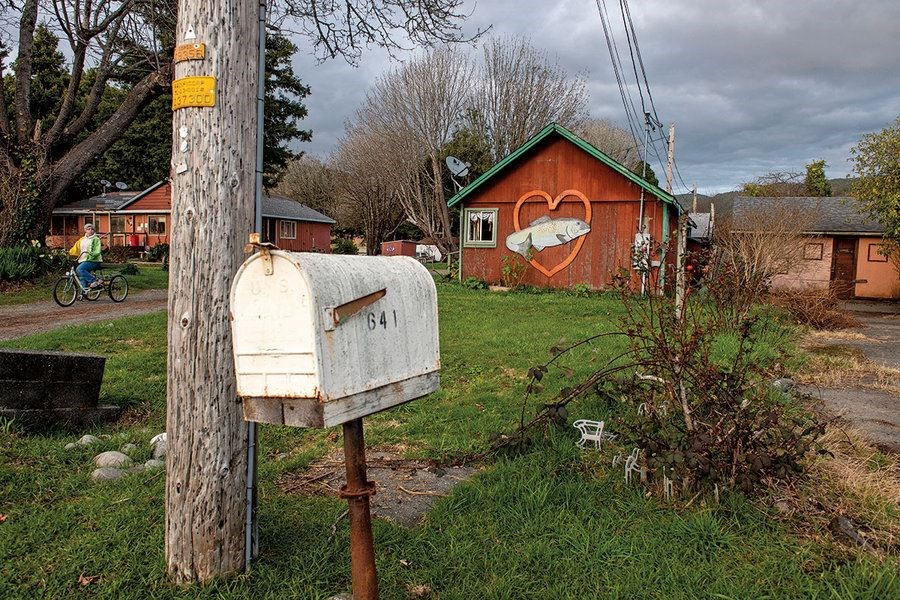 The sun sets over Klamath Glen, California, a small town five miles from the mouth of the Klamath River, surrounded by the Yurok Reservation.Ann Hermes/StaffThe indigenous population at the time was roughly 150,000, and as colonization began almost simultaneously to official statehood in 1850, U.S. law became one of the most effective weapons used against Native Americans in California.
The sun sets over Klamath Glen, California, a small town five miles from the mouth of the Klamath River, surrounded by the Yurok Reservation.Ann Hermes/StaffThe indigenous population at the time was roughly 150,000, and as colonization began almost simultaneously to official statehood in 1850, U.S. law became one of the most effective weapons used against Native Americans in California.
Among the first laws the state legislature passed was the legalization of the “indenture” of “any Indian.” American Indians were also barred from voting, from giving evidence for or against whites, and from serving on juries. In combination, those laws “amounted to a virtual grant of impunity to those who attacked them,” writes Benjamin Madley, a history professor at the University of California, Los Angeles, in an email.
The state government didn’t just turn a blind eye. Officials, including the first California Supreme Court Justice Serranus Hastings, armed volunteer militia groups; these militia expeditions killed at least 1,340 Native Americans between 1850 and 1861, according to Professor Madley’s research. Tens of thousands, especially children, were forced into slave labor in ranches across the state.
Massacres, slavery, and disease reduced California’s native population to about 30,000 within 23 years of statehood. Some tribes lost 95 percent of their population. The Yurok Tribe says three-quarters of its population died in this period, and the tribe faded into obscurity.
Fast-forward a century to 1974, when Judge Abinanti was the first Native American woman to pass the California bar. The Yurok weren’t yet a federally recognized tribe, and prejudices die slowly. Bar exam or no, an Indian can’t be a lawyer, one judge flatly told her. By the 1990s, when she was appointed to the state bench – also the first Native woman to hold that position – there were reportedly just six native Yurok speakers left. No one in her family had ever been involved in the legal profession, except her Yurok grandfather, Marion Rube, who was known to have robbed banks in white face powder and once escaped from San Quentin State Prison.
During the course of Judge Abinanti’s career, she’s witnessed the crime rate among white Americans drop. At the same time, the U.S. criminal justice system has disproportionately incarcerated Native Americans, according to a 2009 report by the National Council on Crime and Delinquency.
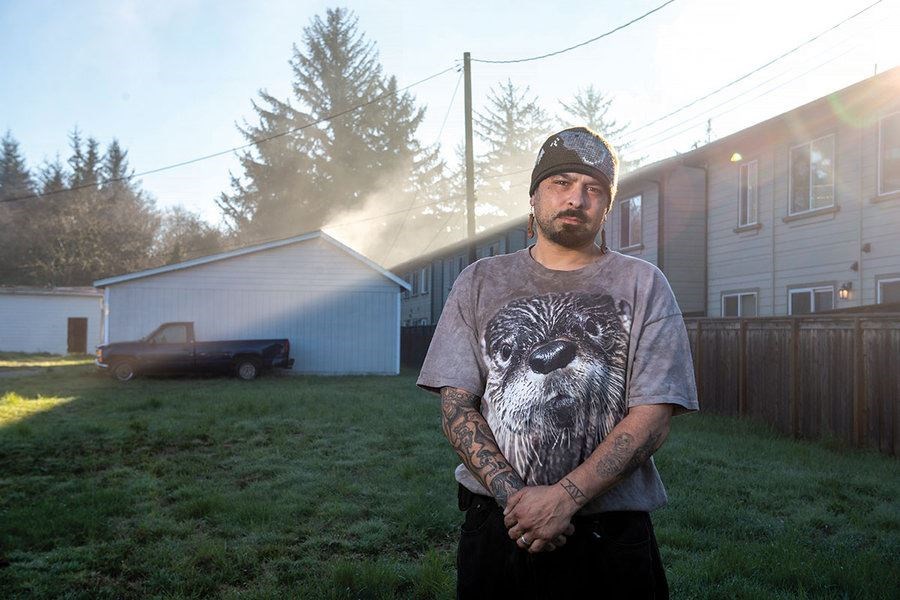 Hoppow Norris stands outside his home in Crescent City, California, north of the Yurok Reservation, in February. He’s a member of the Yurok Tribe, and was in tribal court recently to resolve a guardianship case.Ann Hermes/StaffThey are incarcerated at four times the rate of white Americans, a figure that has been increasing in recent years. Native children are 14 times more likely to be held in state foster care. Native women are raped and murdered at three times the rate of other American women.
Hoppow Norris stands outside his home in Crescent City, California, north of the Yurok Reservation, in February. He’s a member of the Yurok Tribe, and was in tribal court recently to resolve a guardianship case.Ann Hermes/StaffThey are incarcerated at four times the rate of white Americans, a figure that has been increasing in recent years. Native children are 14 times more likely to be held in state foster care. Native women are raped and murdered at three times the rate of other American women.
Judge Abinanti says that the Yurok history of decimation creates a generational trauma, a mental framework that shapes a cycle of behavior among some tribal members. “Until they get that, they feel sort of caught up in something that they can’t control or stop because they don’t know what it is or where it came from,” she says. “We have to take responsibility for acquiring those habits and we have to deal with it.”
Judge Abinanti is driving south over the winding, snow-dusted roads toward Eureka – near where she grew up – when she brings up how she was never a good student. She would misbehave, get punished, and skip school for months at a time.
Her mother rarely did anything about it, and it wasn’t until the young Abby finished high school that she learned of the dark Yurok history with government-run schools and began to understand her mother’s apparent apathy.
The Sherman Institute was one of three federally funded boarding schools established in California around the turn of the 20th century to assimilate Native children and their families into white society.
But between 1904 and 1955, there were 67 children who died and were buried at the school in Riverside, according to the Los Angeles Times. Judge Abinanti says her mother and aunts may have known some of those children. “They never, ever talked about it,” she adds, “and when I came upon it and heard about it, and asked them about it, they [still] wouldn’t talk about it.”
What happened at those schools shaped how her mother looked at education, she says. “What she could let me do, to protect me, was let me stay home. And you see that all over the place.”
What looks like truancy, to most Americans, some tribal members see as child protection. And Judge Abinanti sees a straight line from Indian assimilation boarding schools 50 years ago to not just truancy, but illiteracy and low graduation rates today; a straight line from children being enslaved and laboring on distant ranches to those same children growing up to be abusive parents; a straight line from surviving a massacre to succumbing to violent behavior or substance abuse.
“It’s one thing to just stop behavior, but I think it helps to stop the behavior if you know why,” she says. “Why did my father or my grandfather or whatever do this? Why did that happen? It makes it a whole different ball game, to me.”
Understanding the “why” helped change the ballgame for Jon Riggs, who has both Yurok and Cherokee ancestry.
Raised off the reservation in a drug-addicted family, he started drinking and doing drugs at a very young age. He was 18 when he was arrested for the first time.
He got clean six years ago and went back to school, but he still felt a spiritual hole in his life. When last year he came back to the Klamath for the Jump Dance – a dance that’s meant to “fix the world” – he “was able to connect with something that was much deeper than I had ever done before.” In January, he became a wellness case manager for the tribal court.
Yurok culture “was something that I had to learn, and in a lot of ways it helped heal me,” he says. “I love the idea of us creating here a model that can be taken into any part of society globally.”
Judge Abinanti’s Yurok court isn’t an isolated example. Other judges are seeing tribal-state court cooperation as a better approach to reducing costs, recidivism, and prison populations. Halfway across the country in Washtenaw County in Michigan, Judge Timothy Connors is entering his 29th year on the bench.
With the support of the Michigan Supreme Court, Judge Connors helped establish the Washtenaw County Peacemaking Court in 2013. Based on the conflict resolution traditions of local tribes, the court handles family and civil cases by having everyone involved sit together in a “peace circle” and, essentially, talk things out and try to agree on how to settle the dispute.
Cases range from custody of a child to property disputes, and even if those involved aren’t able to come to a collective agreement, the hope is they leave with a better understanding of the other sides’ perspectives.
Still, the court has seen concrete success. In its first year, 94 percent of cases resulted in an agreement from the parties, and in 2016 Washtenaw County reduced the number of children in foster care by 35 percent (over a two year period) compared with a 9 percent reduction statewide.
Judge Connors came to peacemaking, he says, “simply by doing my job, seeing things and having time to see the ripple effects of what we’re doing, and inherently starting to ask questions.”
“As I started to learn about this resiliency,” he adds, “of this group of people who, despite everything we have done to them, have survived and carried this other truth through all of that, and are willing to share it, I just thought, ‘Wow, we’ve been missing the boat.’ ”
It should be noted that tribal courts are operating at a much smaller scale than traditional courts. They devote more time to working with people who come before them, but the small number of cases they handle makes that much easier.
Back in California, for example, the Yurok Tribal Court took an average of about 319 cases a year between 2012 and 2017, compared with 12,453 in Del Norte County Superior Court and 25,036 in Humboldt County Superior Court. Whether a higher caseload would affect results is unclear. Critics of restorative justice say it’s naive and lacks effective consequences for wrongdoers. Supporters agree that it only works for certain kinds of crimes, and when victims and perpetrators are sincerely motivated to find a resolution. And not everyone here considers the tribal court a better form of justice.
Arnold and Kim Joyce, who are non-Yoruk, are convinced the court is biased against them. Currently in a years-long dispute with their Yurok son-in-law over visitation with their grandchildren, Mr. Joyce thinks Judge Abinanti should have disqualified herself from the case.
Their son-in-law “can make lies, accusations, anything he wants, and they believe him and we’re nobody because we’re not Yurok,” says Ms. Joyce. “I feel like we’re being discriminated against.”
“I understand why they’re for the Yurok people, but we just want to be part of their lives,” she says referring to the grandchildren.
Hoppow Norris understands better than most why the Yurok people need this kind of court. He grew up an “Indian outlaw,” raised by Yuroks who practiced Yurok rites in secret when it was illegal to do so.
Standing in the lobby of the Yurok court, Mr. Norris is here with his daughter’s sister to apply to be her temporary guardian.
His long black ponytail poking through his red hat, and wearing a long dentalium necklace and small wooden spoon earrings he carved himself, Mr. Norris looks completely Yurok. This is a problem for him in other courts.
“I feel like, because of my hair and my skin, I don’t get heard,” he says. Judge Abinanti “is really interested in helping our people,” he adds. “Having a legal system that considers not just the legal part of it but the cultural part of it is really significant for the continuity [of that culture], of keeping something that’s almost dead alive.”
If Lady Justice is blind in the U.S. system, in the Yurok system her eyes are wide open, looking at not just the crime but its personal and historical context, and often responding with compassion. Judge Abinanti says the whole U.S. justice system could benefit from exploring the generational trauma of every individual.
There are descendants of enslaved people, she notes, of Holocaust survivors, and of interned Japanese-Americans. The U.S. could benefit generally, she says, by learning from its various cultures instead of pouring them all into a melting pot. “I think that we have a lot to offer our own citizens, and we have a lot to offer the country as a whole,” she says.
“If [the justice system is] not working then it’s on the humans to say, ‘This just isn’t working and we’re going to change it.’ ”
Real change can take time. In the early 1970s, Judge Abinanti was in law school when the Yurok tribal dances were revived. It was a time of Native political activism and cultural resurgence. Activists occupied Alcatraz and Wounded Knee, and founded independent, Native universities.
But the dances that have come back – the Flower Dance, the Brush Dance, the White Deerskin Dance – aren’t quite the same. They’ve been reconstructed from the fading memories of elders and oral histories passed down through families and reinterpreted.
Judge Abinanti has only danced once. She doesn’t speak Yurok either, though she’s learning. A seventh-grader is teaching her – or trying to. She’s never been a good student, after all.
But she has always known Yurok values – responsibility and renewal – and those values are the rocks she’s built the tribal court on. And it’s those values that some hope may help mend the broken parts of America’s justice system.
“I think that as the indigenous people of America we have a lot to offer. We’ve just never had a place at the table,” says Judge Fairbanks in New Mexico.
“There’s got to be truth and there’s got to be forgiveness.... Or we stay attached to that anger and stay attached to that hate,” she admits. “We have had to look really deep within ourselves to do the forgiveness, and I think that will make us stronger as a people.”
Correction: This article has been updated to correct the spelling of the name Abby Abinanti’s grandfather. It was Rube.
Page created on 3/28/2019 11:38:36 AM
Last edited 3/28/2019 11:58:40 AM
